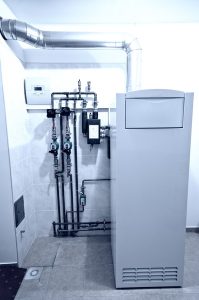Most people, when they choose a new furnace for their Wilsonville home, think that “bigger is better”. However, an oversized furnace can present just as many if not more problems than an undersized furnace. So, if you feel you may have overdone it in the past or you want to avoid making a mistake in the future, here are some signs that your furnace may be oversized.
Short Cycling
The most common sign of oversizing is short cycling. Short cycling occurs when your furnace turns on and off frequently because it reaches the thermostat setting so fast. Basically, your furnace is so powerful that it can produce what you need rapidly and then shuts off. But, because it does this, the temperature in your home is likely to cool much faster as well since the furnace isn’t on all the time.
Additionally, the on and off short cycling has a negative effect on your furnace, causing excess wear and tear on the system and eventually leading to extra repairs and in some cases early replacement.
High and Low Temperatures
When your furnace is turned on for a comfortable indoor temperature like 70 degrees F, the high and low temperature between cycles should be relatively close to that temperature. In an ideal situation, you shouldn’t even notice a fluctuation.
So, if the high temperature gets close to 75 degrees F and the low temperature is around 66 degrees F, you have a furnace much too large for the size of your home.
Furnace Room Issues
You might find that the space and exhaust given for the furnace are not sufficient either, especially if your previous furnace was replaced with this oversized unit. Backflow of a gas or oil smell or excess heat in and near your furnace room are both common signs that the furnace is much too large.
So, what should you do about your oversized furnace? If you have had that furnace for some time or just moved into a new home, it’s a good idea to have a new one installed. Have a proper load calculation done and then get a new furnace installed so you don’t have to worry about the system cycling on and off so often. If it’s a newer unit, call your heating technician and discuss possible options to reduce the negative effects of the miscalculation of its size.
 If you’ve been trying to get through our many cooler months with a space heater and some heavy layers, it is high time that you made the leap to schedule a heating installation in Portland. The main question you will need to ask yourself is what type of heater will work best for your home.
If you’ve been trying to get through our many cooler months with a space heater and some heavy layers, it is high time that you made the leap to schedule a heating installation in Portland. The main question you will need to ask yourself is what type of heater will work best for your home.
 Maybe you’ve been struggling to keep warm this winter because you’ve been trying to keep warm with a space heater instead of using your regular heater, since using the central heater would cost far more. Those portable space heaters can be handy in specific circumstances, but they aren’t a lasting or effective solution to heating your whole home. If you have had to subsidize the heat in your home lately with a small plug-in system, it may mean that you need to replace your overly expensive heating system.
Maybe you’ve been struggling to keep warm this winter because you’ve been trying to keep warm with a space heater instead of using your regular heater, since using the central heater would cost far more. Those portable space heaters can be handy in specific circumstances, but they aren’t a lasting or effective solution to heating your whole home. If you have had to subsidize the heat in your home lately with a small plug-in system, it may mean that you need to replace your overly expensive heating system. It’s finally that time of year. Temperatures are steadily dropping, we’ve shut off our air conditioners, and soon we’ll be running our heaters not just at night, but in the daytime too. And every year, we get countless questions about these two things: How to get the most out of their heater, and how to pay the least in operational costs.
It’s finally that time of year. Temperatures are steadily dropping, we’ve shut off our air conditioners, and soon we’ll be running our heaters not just at night, but in the daytime too. And every year, we get countless questions about these two things: How to get the most out of their heater, and how to pay the least in operational costs.
Join Us Online